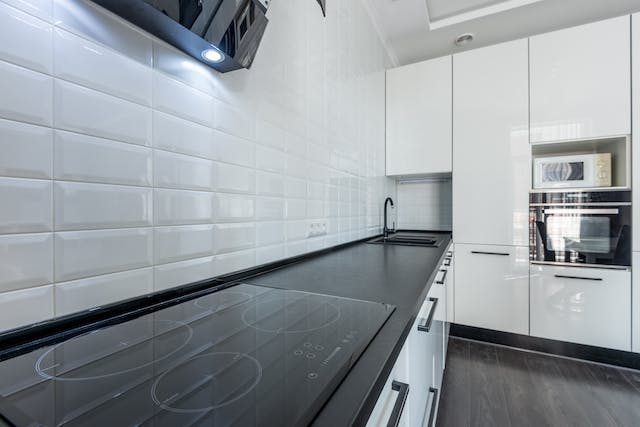
Imagine walking into your kitchen or stepping into your bathroom and being greeted by surfaces that gleam with a fresh and vibrant glow. The sight alone can invigorate your daily routine, setting a positive tone for your day. This is the transformative power of surface refinishing — a process that rejuvenates tired and worn-out surfaces, breathing new life into your living spaces.
Renovating kitchens and bathrooms often conjures images of daunting budgets, weeks of construction noise, and an upheaval of daily life. There’s a lesser-known solution that delivers stunning results without excessive expense and disruption: surface refinishing. This method allows you to keep the elements you love while revamping their appearance, making it an appealing option for both homeowners and those seeking to spruce up rental properties.
What Is Surface Refinishing?
Surface refinishing — also known as reglazing or resurfacing — is the process of restoring and improving the appearance of various surfaces by applying a new finish. This can involve repairing minor damage, applying new coatings, and enhancing the overall aesthetics of countertops, cabinets, tubs, tiles, and more.
Surface refinishing isn’t limited to just one area. Countertops, cabinets, bathtubs, sinks, tiles, and even appliances can all benefit from this process. Whether it’s transforming a dated countertop into a modern masterpiece or giving a worn-out bathtub a glossy new look, refinishing has the versatility to bring about remarkable changes.
Refinishing also stands out as a sustainable choice. Instead of contributing to landfills with old fixtures and materials, refinishing allows you to keep what you have and give it a fresh look. This not only reduces waste but also contributes to the overall sustainability of your living space.
What Are the Benefits of Surface Refinishing?
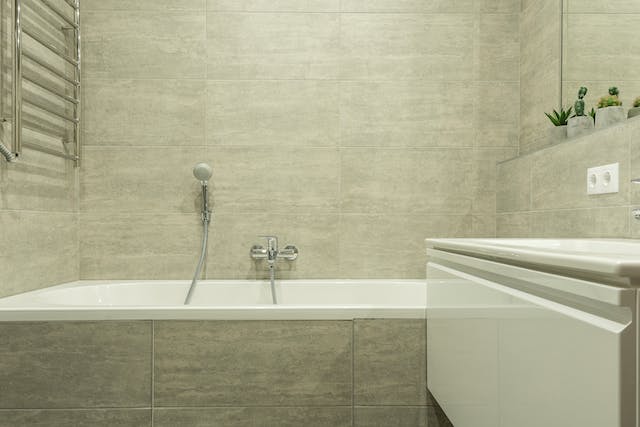
When it comes to revitalizing your home’s kitchen and bathroom spaces, the benefits of surface refinishing are not only numerous but also quite compelling. Here are some of the many advantages of choosing surface refinishing over traditional replacement:
Convenience
Refinishing is a remarkably convenient choice for revitalizing your living spaces. This approach eliminates the need for extensive demolition and the trouble associated with major renovations. When you choose refinishing, you can often continue to use your space during the process, minimizing disruptions to your daily routine.
Cost-effectiveness
The cost of a full-scale renovation can be staggering. In contrast, refinishing offers a budget-friendly alternative that can save you up to 75% of the cost of replacement. This makes it an attractive option for homeowners seeking a remarkable transformation without the hefty price tag.
Minimal Disruption
One of the major drawbacks of renovations is the disruption to daily life. Refinishing, on the other hand, is a process that often takes just a few days, minimizing the disturbance to your routine. You can enjoy a revamped space without the headache of prolonged construction.
Quality Outcomes
Quality isn’t compromised with refinishing. With professional expertise and the right materials, surfaces can be transformed into stunning focal points that rival the appearance of brand-new installations. The key lies in choosing experienced professionals who understand the intricacies of the process.
When Is the Right Time for a Surface Refinishing?
When your surfaces start showing signs of wear and tear, it might be the perfect time to consider the transformative power of refinishing. Here are three clear indicators that it’s time to revive your space:
- Chipped or Peeling Finishes – Cracks, chips, or areas where the finish is peeling away are obvious signs that the surface is in need of attention. These imperfections not only tarnish the appearance but also provide entry points for moisture and debris.
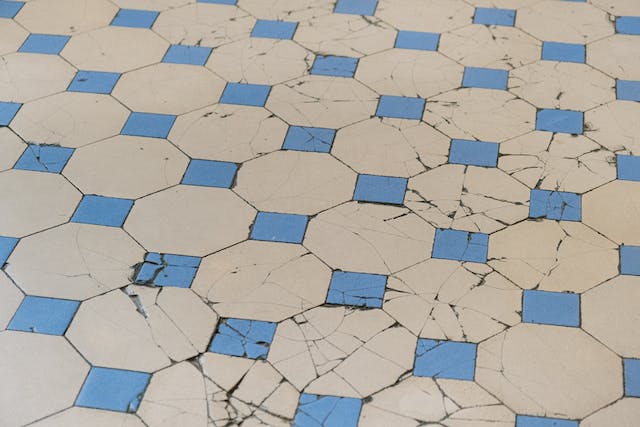
- Stained or Discolored Surfaces – Stubborn stains or discoloration that regular cleaning can’t remove can make your surfaces look aged and unclean. Refinishing can breathe new life into them.
- Outdated Appearances – If your surfaces feel outdated and don’t match your current style or the rest of your space, refinishing offers a cost-effective solution to revamp your aesthetics.
What Factors Contribute to the Wear and Tear of Kitchen and Bathroom Surfaces?
Here are some factors that contribute to wear and tear on your kitchen and bathroom surfaces:
- Daily Usage – Kitchens and bathrooms are some of the most frequently used areas in your home. Constant exposure to cooking, cleaning, and personal care routines can gradually wear down surfaces over time.
- Exposure to Water and Cleaning Agents – Water, cleaning agents, and chemicals commonly used in kitchens and bathrooms can lead to the gradual deterioration of finishes and materials. This is especially true for surfaces that aren’t properly sealed or protected.
- Natural Aging of Materials – Even high-quality materials undergo natural wear as they age. Over the years, the original shine and beauty of surfaces may diminish.
- Abrasion and Impact – Everyday activities can lead to accidental scratches, dents, and impacts that contribute to the overall wear and tear of surfaces.
What Is the Refinishing Process?
Surface refinishing is a meticulous process that involves several carefully orchestrated steps, each contributing to the final result of a beautifully restored and refreshed surface. Understanding the refinishing process can give you a clearer picture of the craftsmanship that goes into this transformative technique.
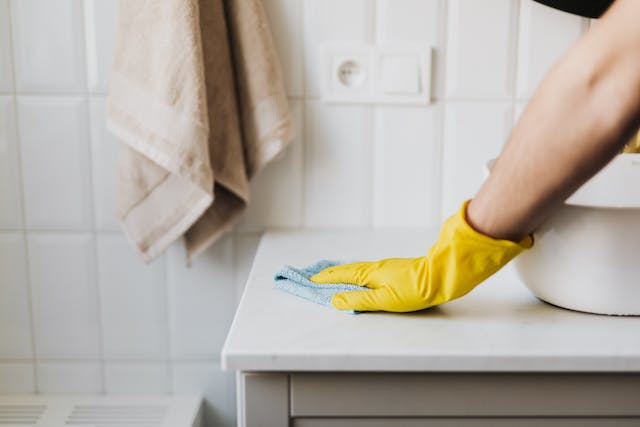
- Preparation – The surface is meticulously cleaned to remove any dirt, grime, or residue. This step is essential to ensure proper adhesion of the new coatings.
- Repairs – Any minor damages, such as chips, scratches, or dents, are carefully repaired. This might involve filling in gaps, sanding down rough areas, or addressing any imperfections to create a smooth base.
- Masking and Ventilation – Areas that are not meant to be refinished, like faucets or adjacent surfaces, are carefully masked to protect them from the refinishing materials. Proper ventilation is also ensured to maintain a safe environment.
- Priming – A high-quality primer is applied to the surface. This acts as a foundation for the subsequent layers, promoting adhesion and creating a consistent surface for the refinishing materials to bond with.
- Coating Application – A specialized coating is skillfully applied to the primed surface. This is where the magic happens – the surface is transformed with a new color or finish. For example, if you’re refinishing a bathtub, the coating will give it a fresh, glossy appearance.
- Curing – After the coating is applied, it’s allowed to cure. This usually takes a few hours or more, depending on the type of coating used. Curing ensures that the finish becomes durable and long-lasting. Once the coating has fully cured, any necessary touch-ups are made to ensure a seamless finish. This attention to detail is what sets professional refinishing apart.
- Buffing and Polishing – In some cases, a buffing and polishing step is included to enhance the shine and luster of the surface. This step adds an extra layer of refinement to the finished product.
Before unveiling the refinished surface, a final inspection is conducted to ensure that everything meets the high standards set by the professionals. Any imperfections are addressed before the project is considered complete.
DIY vs. Professional Refinishing

DIY kits may seem appealing due to their lower cost, but they come with risks. Inconsistent results, improper preparation, and the potential for damage are all concerns. It’s important to weigh these drawbacks against the benefits of professional services.
Complex surfaces like countertops and bathtubs demand a level of expertise that professionals bring. They have experience in managing challenges, ensuring even coatings, and achieving a consistent finish that DIY projects often struggle to deliver.
Professional refinishing ensures longevity. The expertise in the proper application, the use of high-quality materials, and the attention to detail all contribute to a finish that not only looks great initially but also stands the test of time.
Choosing the Right Refinishing Company
Selecting the right refinishing company is key to achieving the desired results. Research companies thoroughly, checking their experience, reputation, and customer reviews.
Experience matters in refinishing. Established companies with positive reviews and a track record of satisfied customers are more likely to deliver on their promises. Warranties offer added assurance that the company stands behind its work.
Ask for references, review portfolios of past projects, and inquire about the products and techniques they use. A trustworthy company will be transparent about its methods and materials.
Extending the Lifespan of Refinished Surfaces
To ensure the enduring beauty and quality of your refinished surfaces, adopting proper maintenance practices is essential. Here’s a list of tips to maximize the longevity of your refinishing projects:
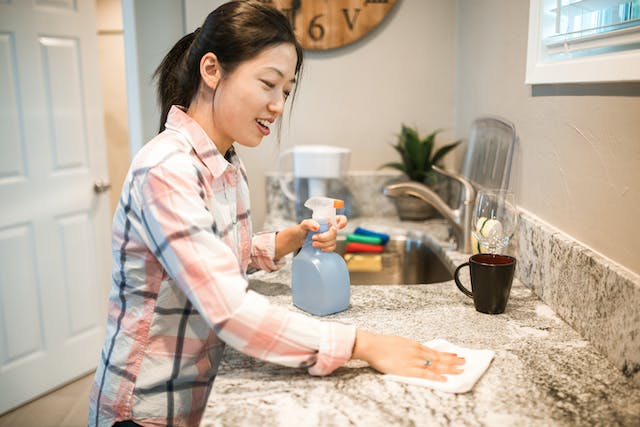
- Gentle Cleaning – Use mild, non-abrasive cleaners to clean your refinished surfaces. Harsh chemicals can compromise the finish and lead to deterioration over time. Opt for soft cloths or sponges when cleaning. Avoid abrasive scrubbing pads or brushes that could scratch the surface.
- Test in a Small Area – Before using a new cleaning product, test it in a small, inconspicuous area to ensure it doesn’t negatively impact the finish.
- Prompt Clean-Up – Wipe up spills and splatters promptly to prevent staining or potential damage to the finish.
- Avoid Impact and Heat Exposure – Refinished surfaces can be durable, but they are not invulnerable. Take care to avoid dropping heavy objects that could chip or crack the finish. Don’t place hot pans, pots, or heated styling tools directly on the surface. Always use protective pads or trivets.
- Manufacturer – Approved Cleaners – Stick to cleaning products recommended by the manufacturer of the refinishing material. These are designed to be gentle and compatible with the finish.
- No Cutting Directly – While refinished countertops are durable, cutting directly on them can damage the finish. Always use cutting boards to protect the surface.
- Regular Inspection – Periodically inspect the refinished surfaces for any signs of wear, damage, or deterioration. Address any issues promptly to prevent them from worsening.
If you’ve been contemplating a kitchen or bathroom overhaul, consider the alternative of surface refinishing. It’s a budget-friendly revolution that showcases the remarkable potential of renewal. Let your living spaces tell a story of transformation, where worn-out surfaces are granted a second chance to shine.



